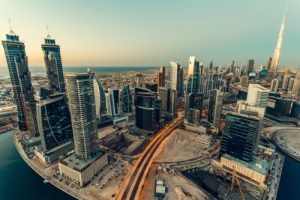(ThySistas.com) When it comes to politics, there are a few subjects that are always guaranteed to draw attention: the economy, taxation, immigration, and a few other popular “go to” issues.
Over recent years, however, there is one subject that has risen to prominence in political discourse: infrastructure.
What is infrastructure?
Infrastructure is a catch-all term for the organizational structures that form the basis for how the country operates. This includes:
- Roads
- Dams
- Bridges
- Electricity and gas supply
- Railways
- Buildings…
- … and so on. Essentially, infrastructure is the underlying framework on which a country is built – the things that we use every day, and rely on to function as normal.
The term is used by both government and private bodies, though we’ll be focusing primarily on government infrastructure.
Why has infrastructure risen to such political prominence?
Unfortunately, the reason behind infrastructure’s sudden place at the top table of positive is less than ideal – simply put, US infrastructure is in incredibly poor condition.
The American Society of Civil Engineers (ASCE) provides a grade for the state of US infrastructure annually. In 2017, that grade was a barely-passing D-. The ASCE noted significant, worrying infrastructure issues throughout the country, some of which may actually pose a danger to those living nearby. Worse yet, the problem is widespread across a variety of different areas, with dams, bridges, and roads all found all found wanting.
This report was not particularly new information; infrastructure health has been suffering for some time in the US. However, there has been something of a cumulative effect; as the problem has worsened, more and more focus has been dedicated to the issue. Media outlets now focus on the problem more frequently:
The pressure has built slowly, benefiting from more and more media attention and public awareness, to the point we are at today. While infrastructure is not the biggest political issue, it’s now very much involved in the mix, with many people – across all parties – calling attention to the fact that US infrastructure is is in real, genuine trouble.
How has US infrastructure become so bad?
Opinions differ, and as is so often the case with political matters, the truth is usually found in a combination of all of the differing viewpoints. We can narrow the cause down to two particular, systemic problems first and foremost:
- The first – and arguably the most common – reason suggested is a lack of significant investment in infrastructure. Governments are often unwilling to spend on infrastructure as the product of their investment will usually not be seen until years after they have left office. To politicians, this seems like a bad deal; they spend public money, with little to show for it.
- There are also efficiency issues found in existing infrastructure works, which require significant remedial action to allow for funds that are allocated to infrastructure to be used as effectively as possible.
It’s also worth noting that infrastructure isn’t an exciting political topic – it’s not the kind of subject that is going to get crowds cheering, or cause citizens to rush to the ballot box. As a result, infrastructure is an issue that has been neglected by all politicians for many years – which has undoubtedly contributed to the existing problem.
However, times have changed, and the problem forced its way into the political consciousness, and slowly but surely, politicians have begun to discuss the subject. Donald Trump has a broad infrastructure plan, and the President has recently stated that he hopes to work with the newly-Democrat-majority House of Representatives on the issue. Given the scope of the issue, bipartisan agreements could be crucial.
So, what can be done to improve the US’ infrastructure?
Solving the US infrastructure crisis requires the two key issues – lack of investment and poor efficiency – to be addressed.
It is, however, imperative that both issues are addressed, rather than focusing solely on one or the other. Often, people suggest that infrastructure is a problem solely due to a lack of investment – but this isn’t the case. For example, Bloomberg reported that US infrastructure costs are higher and projects take longer when compared to other countries, which suggests that efficiency is also a crucial point of focus for this debate.
It is clear that money alone is not going to fix the issue. Money will help – and plans suggest that funding will be forthcoming – but there also needs to be a significant change in the way that this money is used. To truly solve the infrastructure issue, it is vital that governmental bodies are prepared to turn to highly a highly-efficient municipal engineer who is capable of performing the work required, on budget, and right on schedule. In addition to ensuring only the best companies are hired to undertake the work, it may also be helpful to look at deregulation opportunities, which could help to substantially increase productivity and efficiency.
Of course, in addition to examining the efficiency issue, there will need to be significant public investment. This may sound like a daunting prospect, but it can be a positive: extra infrastructure investment will inevitably create more jobs, which should in turn help to stimulate economic growth; this Huffington Post article neatly demonstrates that investment in infrastructure could actually be a net gain for the taxpayer.
It can be argued that it is only with this dual approach, with each side receiving the necessary amount of attention, that the US infrastructure can truly undergo the transformation it requires.
On a final note, it is also essential that the topic of infrastructure remains a key political issue. This is a problem that seems to have been addressed by both parties for the moment, but this new focus will need to be sustained in future.
In conclusion
US infrastructure is currently struggling, and the problems are projected to worsen in the future.
However, the problem is not terminal. With a combined approach that takes into account all of the contributory factors, the US’ infrastructure can be saved – and doing so might just result in a further boom to the already-soaring economy.
Staff Writer; Emma Gold










Leave a Reply